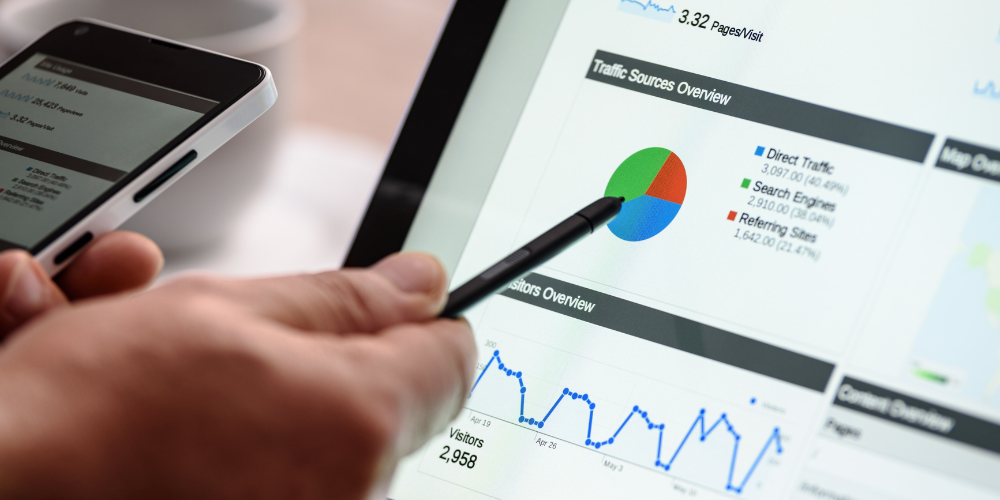
It takes a lot of time, energy, and effort to get all the right data into your Customer Relationship Management (CRM) software. But what do you do with it once it’s there? How do you get your hard work to pay off? Here are just five ideas for mining your CRM data and boosting your end-of-year fundraising.
As the world moves further and further online, organizations of every stripe — including nonprofits — are realizing the importance of organizing the information they have on their clients, supporters, volunteers, and donors.
Everyone’s heard the phrase, “Information is power,” but that information has to be used to make changes. Is your nonprofit using its CRM data effectively?
If you aren’t using a CRM at your organization, today’s the day to begin collecting key data on your audiences. After you start collecting that data, then try out these ideas to leverage that powerful information and bring your nonprofit increased volunteer engagement, bigger donations, and more recurring gifts.
Email smarter, not harder
Nonprofits have the second highest average open rate across all industries, so if you belong to the average, don’t rebuild the engine here — but it could still be time for an oil change.
Within your CRM, you should have volunteers and donors organized based on their donation or engagement level, the frequency of these activities, and basic demographic information like age and income. Once you have all this in your system, you’ll have basic answers to how you can segment your audience to increase engagement.
Segmentation is the process of sending specific messaging to specific groups based on their behaviors, interests, demographic data, or other differentiating factors. This is the most important use of your CRM — getting the right message in front of the right people at the right time.
Drip campaigns, which send a series of consecutive emails, are a great way to engage with new donors or volunteers, but digital marketing has evolved, and more advanced email techniques include follow-up emails based on people’s specific behaviors on your website. If someone visits the page on your website highlighting your next event, this could trigger an email being sent to them with more information about the speaker roster or even a discounted ticket.
Drip email campaigns are a great place to start, but don’t let your email marketing end there. Modern digital marketing software offers so many opportunities that growing nonprofits are leveraging to further expand their impact.
Launch a CRM retargeting — or Email Mapping — campaign
The main reason why email campaigns aren’t going anywhere is because even if average open rates are stuck around 25% for nonprofits, they also saw that for every 1,000 messages sent, nonprofits raised $90. But one way to enhance your email campaigns outside of making them smarter is by pairing them with the right ad campaigns.
CRM retargeting campaigns — called email mapping on Feathr’s platform or lookalike campaigns elsewhere — serve ads to users based on their email address.
If you have a list of emails for a group you want to target, you can pop that into your ad campaign and start showing lapsed donors, past volunteers, large donors, or any other email list specific ads catered to their needs, wants, and patterns.
This is especially valuable for that unsubscriber list. Some people don’t want their inboxes flooded with every organization that they’ve interacted with. But this doesn’t mean that a well placed ad will be ignored. It may actually be the perfect touch point for someone who cares about your mission but also cares about keeping their inbox at zero.
Get social with it
It can feel like there’s a new social media site every other day. But this is good news for your organization. It means there’s always a new way to get in front of the people you’re trying to engage.
In 2020 Pew Research found that 70% of those ages 18 to 29 have a Facebook account while 77% of those in the 30 to 49 age range have an account. So if you’re looking for more 40 year olds than 20 year olds, Facebook may be your platform of choice. But if you’re looking for a younger audience, TikTok may be your best next step.
With the information you already have in your CRM, you can now link that to social media sites so that you’re maximizing engagement on those platforms. Lookalike campaigns can serve social ads based on the target audience you want to reach. Instead of only running campaigns with your active email lists, social sites allow you to expand, finding people that are similar to the ones you share with them.
Make sure you use your CRM data to its fullest potential. Email is a great place to start, but email alone won’t maximize the results you can expect from this invaluable information you have about your donors, volunteers, and supporters.
Just pick up the phone
There’s a time for marketing, and there’s a time for fundraising. In the typical for-profit, this distinction is represented by two departments: marketing and sales. But in nonprofit development, this can often be muddier. And with smaller staffs, nonprofits might wear more hats than their for-profit counterparts. This has its pros and cons, so let’s focus on the pros.
Unlike in a for-profit where the marketing department is going to steer clear of the sales cycle, you may have teams that fulfill a bit of both. And sometimes this means that the best next step is simply picking up the phone.
Split up the work and ensure that this doesn’t lead to burn out on your team, but a check-in with donors or volunteers, especially with the person who’s closest with that contact within your organization, is going to have a positive impact on donations and volunteer engagement.
There’s a time to be smart and scale your relationships with your audience as a whole, and there’s another time where the best way forward is just to do the hard, time-consuming, and individual work of talking to each of your key supporters.
Your CRM, if built the right way, is going to be foundational in revealing who should be called and when. Ensure that the people hopping on these calls make notes about preferences for communication or other patterns that they notice. Some people prefer email but some people are always going to want to hear a voice on the other end of the line.
Meet them on search
This idea may require more creativity than the previous ones. But I know your nonprofit didn’t get to where it is without hard work and some out-of-the-box ideas!
Your CRM includes soft data about the types of people that relate to your nonprofit. If you find that a lot of your donors are members in a specific organization that’s peripheral to your mission, it may be cost-effective to target ads to people who search those types of terms on Google or Bing. The important thing here is to start digging for patterns, and when you see one that seems promising, think of keywords that they would be punching into a search.
In many ways this acts as a type of self-built lookalike campaign. You decide possible audiences that might be interested in your mission, and you target them specifically based on the terms they would likely be searching online.
Takeaways
We want nonprofits to use the latest digital marketing tools so that they can maximize their impact — and Good in the world. And although change is always hard, these five ideas are a great place to start if you’re looking for new ways to integrate your CRM data into your outreach.
Marketers talk constantly about testing. Maybe your nonprofit is already leveraging a few new strategies, but we hope one of these helps you push the needle as we all approach the end-of-year giving season. Good luck knocking those goals out of the park!
You May Also Like
These Related Stories

How to re-engage lapsed donors with email mapping campaigns

Charity marketing | A complete guide to expand your impact
